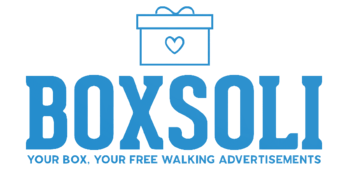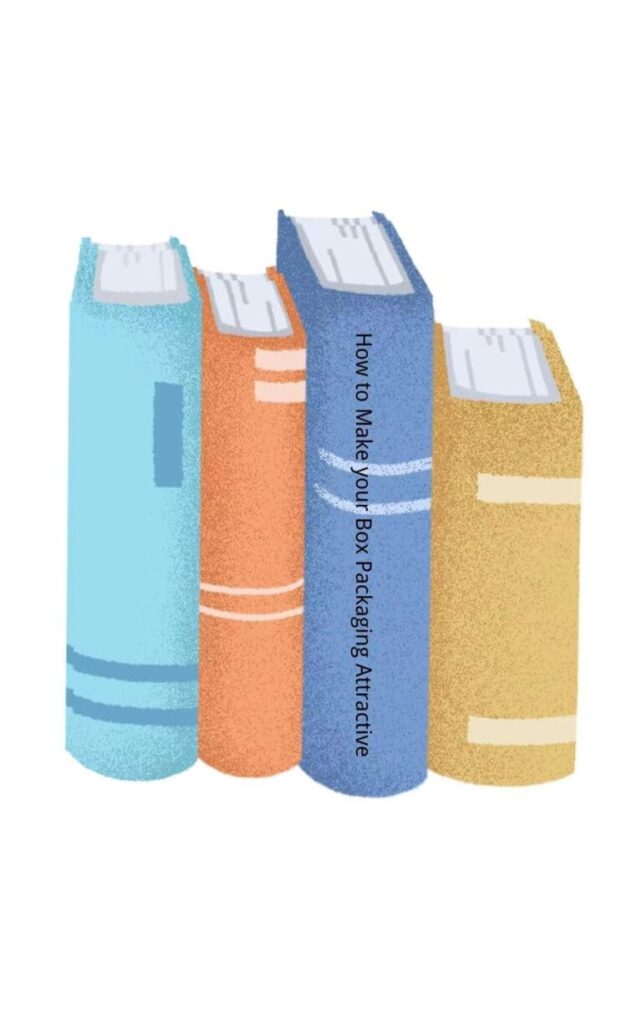
Nowadays, sustainability and environmental protection are more important than ever.
More and more consumers realize that product packaging has a significant impact on the environment. They are demanding products with sustainable packaging to protect the environment.
As a result, product suppliers must explore eco-friendly and sustainable packaging materials and alternatives to minimize their carbon footprint to meet consumers’ demands, while still being economical for their businesses.
The question of how to balance ecology and corporate profitability has always been a problem for companies. In this article, I’ll explore why carton packaging is a great sustainable business option for companies looking for eco-friendly packaging solutions.
Let’s dive in!

What Is Eco-Friendly Packaging?
Eco-friendly packaging refers to a type of packaging that is environmentally friendly or sustainable through its production cycle. Sustainable packing reduces waste in landfills while protecting a product from damage.
Typically, eco-friendly packaging refers to materials that can be recycled, biodegradable, or minimally impact the ecosystem. This demand for sustainable product packaging has led manufacturers to develop new materials to meet specific needs and remain eco-friendly.
Sustainable packaging can include using recyclable packaging or biodegradable materials, reducing the amount of packaging needed, and designing packaging to be as sustainable as possible.

There are many different approaches to eco-friendly packaging, and there is no one-size-fits-all solution. In general, however, eco-friendly packaging is becoming more important as consumers become more conscious of the positive impact their purchases have on the environment.
Why the Paper Box Packaging is a Sustainable Choice?
Paper box packaging is one of the most sustainable packaging available. This is because it is made from renewable resources – trees – and can be recycled many times before it loses its strength.
Compared to plastic and styrofoam packaging, which can take hundreds of years to break down in landfill, paper boxes decompose relatively quickly. This means that they have a much smaller environmental impact on their lifecycle.

Paper boxes are widely used because they are highly versatile and can hold various sizes and shapes of products. They are renewable resources, so by using paper boxes instead of plastic or non-renewable materials( like metals), we can minimize carbon emissions.
Paper boxes are also biodegradable and can reduce landfill accumulation by an average of 40%. Since paper is made from a renewable resource and breaks down much slower than most plastics, it doesn’t pose significant threats to wildlife if it finds its way into ecosystems.

What’s more, paper box packaging offers many benefits for companies committed to eco-friendliness.
- First, the production process of paper box packaging is less energy-intensive when compared to plastic or metal packaging.
- Additionally, it is easier and cheaper to use recycled paper than other materials, and recycled paper boxes can work just as well as newly manufactured ones.
- Moreover, paper boxes feature a high level of versatility in their design, making them adaptable to various shapes, sizes, and products. Businesses can opt for customized printing on paper boxes to enhance their marketing strategy or brand identity while still promoting sustainable business practices.
- Furthermore, paper boxes are lighter in weight, which means transportation emissions are reduced, leading to lower transport costs. This reduction is essential when considering the carbon footprint during shipping, resulting in carbon savings per shipment compared to heavier packaging alternatives.

The Benefits of Choosing Eco-friendly Paper Box Packaging
Compared to traditional packaging materials, such as plastics or Styrofoam, eco-friendly packaging refers to any type of packing material that has a lower impact on the environment. These types of environmentally friendly packaging can be made from sustainable natural materials, biodegradable or compostable which reduces environmental waste.
There are several benefits to adopting eco-friendly packaging:
- Reduce Carbon Emissions
Unlike non-renewable materials like metals, paper boxes have low carbon footprints. It means if we use paper boxes, we use fewer natural resources, preserving our ecosystem.
We need to use eco-friendly packaging significantly reduce energy consumption, emissions, and waste by opting for sustainable alternatives.

- Cost-Effective
Traditional packaging methods, including plastic wrapping or Styrofoam, do not decompose easily and can remain in landfills for decades. Eco-friendly packaging materials, such as paper boxes or compostable plastics, decompose quickly and leave no harmful chemicals behind.
- Ease of Design
Paper boxes offer design flexibility due to the easily customized designs attribute of paper making it an excellent choice for packaging. With modern manufacturing technologies, you can choose the colors, and print text, images, or designs onto the paper, increasing brand loyalty and visibility.
- Biodegradability
Since paper boxes are recyclable and biodegradable, they help prevent environmental pollutants, producing significantly less waste compared to plastic packages.
Unlike other plastic waste, paper breaks down naturally, does not pollute oceans, and poses no direct threat to animals.

- Lightweight & Easy to Transport
Since paper boxes are lightweight, they reduce shipping’s environmental impact and transportation costs, reducing your carbon footprint. The lighter the package, the fewer fuel costs associated with its transport.
- Demonstrating Corporate Social Responsibility
In today’s environmentally conscious era, customers expect companies to prioritize sustainability in their supply chain and packaging choices. Choosing eco-friendly options enhances a business’s reputation and promotes goodwill among consumers.
Types of Eco-Friendly Materials Used For Paper Box Packaging
To be considered eco-friendly, paper boxes must be made from 100% recycled paper fibers, non-toxic inks, or biodegradable packaging materials.
These types of recycled packaging boxes tend to be less durable than conventional boxes since they contain no harmful dyes or chemicals.
Companies can access several eco-friendly materials to manufacture paper boxes, including:
1. Corrugated Board

A corrugated board is a composite material composed of two layers of kraft paper with a fluted layer in between. It’s durable enough to protect heavy-weighted items, making it a favorite for online shopping deliveries.
2. Kraft and Recycled Paper
Kraft paper is crafted with pure wood pulp that’s unbleached, saving tons of aquatic life forms and reducing carbon dioxide’s hazardous release. Kraft paper is another eco-friendly alternative used for packaging. Made from unbleached pulp and strong kraft fibers, it’s sturdy and 100% recyclable.

On the other hand, recycled paper is made of renewable resources collected from post-consumer packaging waste streams, limiting landfill activities and preserving our green ecosystem.
Although its strength varies depending on thickness, the cost of recycled cardboard per unit is often lower when purchasing in bulk.

3. Pulp Moulding
Pulp molding uses recycled paperboard pulp that’s turned into lower-toxicity materials such as egg cartons, cereal boxes and drink trays. This way, a byproduct that often goes to waste can be repurposed in support of eco-friendly paper box packaging.
To be considered eco-friendly, paper boxes must be made from 100% recycled paper fibers, non-toxic inks, or biodegradable packaging materials. These types of boxes tend to be less durable than conventional boxes since they contain no harmful dyes or chemicals.

4. Biodegradable Paper
Certain paper types are biodegradable, such as uncoated paper, which has not been treated with chemicals or immersed in plastic laminates.
To ensure your paper box packaging range is sustainable, you can choose materials sourced responsibly and certified by trusted authorities, such as FSC(The Forestry Stewardship Council )-certified paper.
In short, when choosing your sustainable paper packaging solution, you try to find a way to minimize the impact of your packaging on the environment.

Eco-Friendly Paper Box Packaging Options
Several eco-friendly paper box packaging options are currently available on the market. Below are some examples:
1. Kraft Paper Boxes
Made from unbleached, natural paper pulp that does not include any artificial dyes, creating a rustic finish.

2. Corrugated Fiberboard Boxes
These boxes are made from a corrugated board containing two sheets of linerboard glued between three sheets of corrugating medium. Those boxes are recyclable and biodegradable, and they provide cushioning and structural support.

3. Rigid Paperboard Boxes
The primary feature of these boxes is their sturdiness. They’re manufactured from high-quality paperboard, making them ideal for industrial packaging, electronics, and food trades that require tight physical protection.

4. Paper Bags
An environmentally friendly, reusable, and compostable packaging option for takeaway items, especially food, that also bears a stylish yet simple appearance that appeals to many customers.

5.Recyclable Paper Bags
These paper bags are washable, lightweight, compostable, and reusable. They are ideal for carrying objects comfortably without any accidental spillage while promoting eco-friendliness.

6. Card Stock Boxes
Cardstock is a thick and dense form of paperboard that’s commonly used for displays, drawings, and postcards. They are lightweight, versatile, and affordable, making them ideal for display stands, jewelry packaging, and invitations.

7. Printing tissue paper
This kind of eco-friendly paper wrap is an excellent way of adding style and sophistication to environmental packaging, while also providing extra protection to delicate items inside the box.

Conclusion
Paper box packaging represents one of the most sustainable packaging solutions available, providing numerous benefits over traditional plastics and other versions. Nowadays, people care about their environmental impact, especially about their consumption.
As a result, many prefer eco-friendly products and packaging alternatives and brands that emphasize sustainability.
With the numerous eco-paper and compostable packaging options available in embracing a greener model, companies can contribute towards driving positive change within their industry.

As the world becomes increasingly focused on sustainability, incorporating green packaging methods like paper box packaging will undoubtedly become more common throughout the future.
Frequently Asked Questions (FAQs)
Q1: Is paper box packaging better than plastic packaging?
A1: Yes. Paper box packaging is considered to be more environmentally sustainable than plastic packaging due to its renewable resource, overall lower carbon footprint, reduced atmospheric pollution, and highly recyclable nature.
Q2: Can eco-friendly paper box packaging still be used for heavy items?
A2: Of course. Thick cardboards and reinforced kraft paper are one of the most traditional paper box packaging styles that can withstand the weight of the product.

Q3: What needs to be considered when selecting eco-friendly packaging?
A3: When evaluating eco-friendly packaging options, consider elements such as reusability, recyclability, efficiency, and affordability. Ensure the sustainable packaging solution reflects your organization’s values and goals, extending its product offerings and brand personality sustainably.
Q4: Which other eco-friendly paper material alternatives are available?
A4: Some popular eco-friendly paper material alternatives include bamboo fiber, bagasse, mushroom, and corn-based starches.
Q5: How do companies make environmentally friendly paper box packaging?
If your companies looking to switch to eco packaging, you can start by researching eco-friendly alternatives, and working with suppliers to source sustainable materials. Then you educate customers on the importance of eco-packaging and using eco-labels on products.



